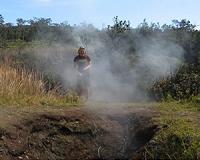 |
Washington DC (SPX) Mar 02, 2010 Using data from a NASA radar that flew aboard India's Chandrayaan-1 spacecraft, scientists have detected ice deposits near the moon's north pole. NASA's Mini-SAR instrument, a lightweight, synthetic aperture radar, found more than 40 small craters with water ice. The craters range in size from 1 to 9 miles (2 to15 km) in diameter. Although the total amount of ice depends on its thickness in each crater, it's estimated there could be at least 1.3 million pounds (600 million metric tons) of water ice. "The emerging picture from the multiple measurements and resulting data of the instruments on lunar missions indicates that water creation, migration, deposition and retention are occurring on the moon," said Paul Spudis, principal investigator of the Mini-SAR experiment at the Lunar and Planetary Institute in Houston. "The new discoveries show the moon is an even more interesting and attractive scientific, exploration and operational destination than people had previously thought." During the past year, the Mini-SAR mapped the moon's permanently-shadowed polar craters that aren't visible from Earth. The radar uses the polarization properties of reflected radio waves to characterize surface properties. Results from the mapping showed deposits having radar characteristics similar to ice. "After analyzing the data, our science team determined a strong indication of water ice, a finding which will give future missions a new target to further explore and exploit," said Jason Crusan, program executive for the Mini-RF Program for NASA's Space Operations Mission Directorate in Washington. The Mini-SAR's findings are being published in the journal Geophysical Research Letters. The results are consistent with recent findings of other NASA instruments and add to the growing scientific understanding of the multiple forms of water found on the moon. The agency's Moon Mineralogy Mapper discovered water molecules in the moon's polar regions, while water vapor was detected by NASA's Lunar Crater Observation and Sensing Satellite, or LCROSS. Mini-SAR and Moon Mineralogy Mapper are two of 11 instruments on the Indian Space Research Organization's Chandrayaan-1. The Applied Physics Laboratory in Laurel, Md., performed the final integration and testing on Mini-SAR. It was developed and built by the Naval Air Warfare Center in China Lake, Calif., and several other commercial and government contributors.
Share This Article With Planet Earth
Related Links NASA's Mini-SAR, also known as Mini-RF Moon Mineralogy Mapper Mars News and Information at MarsDaily.com Lunar Dreams and more
 Into A Volcano To Test Suitcase-Sized Science Lab
Into A Volcano To Test Suitcase-Sized Science LabBaltimore MD (SPX) Feb 25, 2010 Some scientists will go anywhere for a proper test, including the mouth of a (sleeping) Hawaiian volcano. Dr. Inge Ten Kate, a University of Maryland Baltimore County research assistant, led an expedition into a cinder cone atop Mauna Kea, Hawaii, to test the prototype for an instrument that will be a miniature laboratory to discover the composition of rocks and atmospheres on moons, asteroids, ... read more |
|
| The content herein, unless otherwise known to be public domain, are Copyright 1995-2010 - SpaceDaily. AFP and UPI Wire Stories are copyright Agence France-Presse and United Press International. ESA Portal Reports are copyright European Space Agency. All NASA sourced material is public domain. Additional copyrights may apply in whole or part to other bona fide parties. Advertising does not imply endorsement,agreement or approval of any opinions, statements or information provided by SpaceDaily on any Web page published or hosted by SpaceDaily. Privacy Statement |